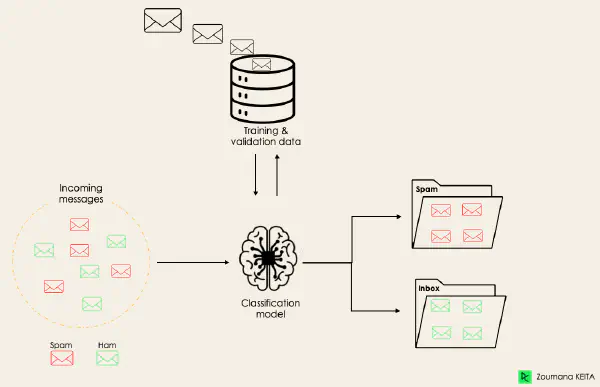
In the era of digital transformation, the ability to analyze and understand images has become a crucial aspect of various industries. Machine learning, particularly image classification, has emerged as a powerful tool to interpret visual data. In this blog, we will explore the fascinating world of image classification, with a focus on leveraging OpenCV and image processing techniques.
Understanding Image Classification
Image classification involves the use of machine learning algorithms to categorize images into predefined classes or labels. This capability has diverse applications, ranging from medical diagnosis and autonomous vehicles to facial recognition and content filtering.
The Role of Machine Learning
Supervised Learning
Image classification typically employs supervised learning, where the algorithm is trained on a labeled dataset. Each image in the dataset is associated with a specific label, allowing the model to learn patterns and features that distinguish one class from another.
Convolutional Neural Networks (CNNs)
Convolutional neural networks (CNNs) have proven to be highly effective in image classification tasks. CNNs mimic the human visual system by using convolutional layers to automatically learn hierarchical features from images. These networks excel at capturing spatial hierarchies and patterns, making them ideal for image-related tasks.
OpenCV: A Powerful Ally
OpenCV (Open Source Computer Vision Library) is a versatile open-source library that plays a crucial role in image processing and computer vision applications. Leveraging OpenCV in conjunction with machine learning frameworks can significantly enhance the image classification process.
Key OpenCV Features for Image Classification
- Image Preprocessing: OpenCV provides a rich set of functions for image preprocessing, including resizing, normalization, and data augmentation. Proper preprocessing ensures that the input data is in a suitable form for the machine learning model.
- Feature Extraction: OpenCV offers tools for extracting essential features from images, such as edges, textures, and key points. These features serve as input for machine learning models, aiding in the recognition of patterns and objects.
- Image Filtering: Filtering techniques in OpenCV, such as blurring and sharpening, can be applied to enhance or suppress certain features in images. This is particularly useful for noise reduction and improving the quality of input data.
Building Your Image Classification Pipeline
Step 1: Data Collection and Labeling
Gather a diverse dataset of labeled images relevant to your classification task. Ensure that the dataset represents the variability present in real-world scenarios.
Step 2: Data Preprocessing
Use OpenCV to preprocess your images. Resize them to a uniform size, normalize pixel values, and apply other transformations to improve the quality of the input data.
Step 3: Model Training
Select a suitable machine learning framework (e.g., TensorFlow, PyTorch) and implement a CNN architecture. Train the model using your preprocessed dataset, adjusting parameters to optimize performance.
Step 4: Model Evaluation and Fine-Tuning
Evaluate your model on a separate validation dataset to assess its accuracy. Fine-tune the model by adjusting hyperparameters or incorporating regularization techniques to improve generalization.
Step 5: Deployment
Once satisfied with the model’s performance, deploy it in your desired application, whether it’s a mobile app, web service, or embedded system.
Conclusion 🏁
Image classification with machine learning, powered by OpenCV, opens up a realm of possibilities for industries seeking to harness the potential of visual data. By understanding the fundamentals, leveraging powerful tools, and following a systematic approach, you can embark on a journey to build robust image classification systems that make a positive impact across various domains.